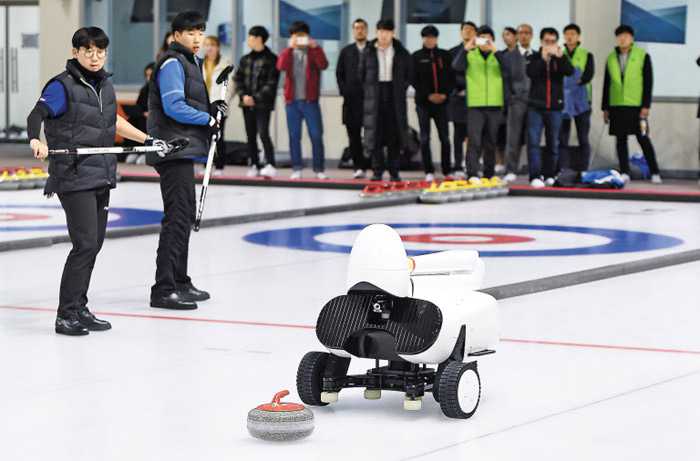Humans Beat Robots in Curling Match
11 March, 2018

Humans soundly thrashed a pair of robots in a game of curling in Icheon, Gyeonggi Province on Thursday.
It was the first-ever match between humans and machines in the sport. The robots, collectively named Curly, were developed by a consortium of eight domestic research institutes and robotics firms including Korea University, Ulsan National Institute of Science and Technology, Daegu Gyeongbuk Institute of Science and Technology and NT Robot.
A robot capable of sweeping has yet to be developed, so one robot served as the skip or captain while the second served as the stone thrower against three human athletes in two ends.
Curly acquired the skills through deep learning like Google's AlphaGo program, studying 16,000 shots that took place in 1,321 matches over the last three years.
Curly plays against high school players in Icheon, Gyeonggi Province on Thursday. /Newsis
The skip robot identified the locations of stones with two cameras mounted on its head and gave instructions to the thrower robot. They took much longer than humans in executing each move.
Still, Curly is currently skilled enough to compete against high-school curlers and displays 65-percent accuracy in the draw and 80-percent accuracy in takeout. The shot success rate of national squads is more than 85 percent.
Curly made several exceptional takeout moves but also frequent errors when may stones covered the playing area towards the end of the ends, and the humans beat Curly 3-0.
But Curly beat humans 1-0 in an unofficial match held earlier. One athlete who competed against Curly said, "I was surprised by the variety of shots thrown by the robots."
Sull Sang-hoon at Korea University who led the development, said, "Unlike baduk or go, which is played on designated spots, curling entails many variables such as collisions between stones and the quality of ice, so it is difficult to compare AlphaGo and Curly. But by developing AI technology involving the communication between robots, we may find new applications to reduce risks with self-driving cars."
